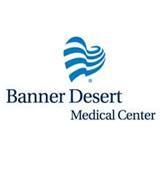The Basics of a Coronary Angioplasty from a Phoenix Cardiologist
The heart is supplied by three main coronary arteries and their various branches. Atherosclerosis causes discrete, scattered areas of blockage within one or more of these vessels. When the blockage is large, it will reduce the blood flow to the heart muscle and cause chest pain. The Percutaneous Transluminal Coronary Angioplasty (PTCA) is a technique used to dilate these blocked arteries.
Who Needs Angioplasty
Your Phoenix cardiologist may recommend angioplasty if you have blocked or narrowing of the coronary arteries from coronary heart disease (CHD). This treatment has some advantages over coronary bypass graft surgery. It does not require open heart surgery, there is no anesthesia necessary, and there is a shorter recovery period. Angioplasty is also done for emergency treatment following a heart attack. Quickly opening a blocked artery will restore the flow of blood to the heart muscle and reduce the damage.
Before the Test
The angioplasty procedure is done in the hospital setting. The Arizona cardiologist meets with you beforehand, takes a detailed medical history, conducts a comprehensive examination, and discusses the procedure with you. He may require you to undergo several diagnostic tests before the angioplasty, such as an EKG and blood work.
Before the test, the Mesa cardiologist will advise you when to begin fasting. You are not usually allowed to eat or drink 8 hours before the procedure. Also, he will advise you about your medications. The test takes around 2 hours, and you will need to bring someone to drive you home.
During the Test
Angioplasty opens the diseased arterial segments to relieve recurring chest pain, reduce the risk for heart attack, and increase the quality of life. This procedure is considered safer than bypass surgery and can be repeated if necessary. The doctor will determine the location and type of blockage you have prior to the procedure. This allows him to consider other treatments, such as atherectomy, stenting, surgery, or medications.
Your heart is accessed by a catheter that goes into your groin artery and threads up to the heart region. This thin, flexible tube is guided under x-ray visualization, and pressures are measured by an angiogram. Contrast dye is used to mark the areas of blockage.
During the test, you will receive strong anticoagulant medication through an intravenous line. This medicine helps prevent blood clots from forming in the artery or stent. The doctor may give you antiplatelet medication before the test, as well. Also, a balloon on the end of the catheter is inflated to push the plaque against the artery wall. This improves the blood flow and relieves the blockage. Sometimes, the balloon must be inflated and deflated more than once in order to open the artery.
The Phoenix cardiologist may insert a stent into the artery to keep it open. The stent is a tiny piece of mesh shaped like a tube. The stent expands against the artery wall and remains there after the catheter is removed. Once the test is done, the catheter will be removed and a nurse will apply pressure on your insertion site. This is done to stop bleeding and prevent complications.
Risks and Complications of Angioplasty
When done by an experienced and adequately trained cardiologist, the angioplasty procedure is quite safe. However, risks include bleeding, infection at the insertion site, low blood pressure, allergic reaction to dye, heart attack, stroke, and arrhythmia. Complications are higher in people older than 65 years, people with chronic kidney disease, people with extensive heart disease or blockages, and those who are in shock.
AZ Heart Doctor provides comprehensive noninterventional cardiology services to the greater Phoenix area with offices in Tempe and Mesa AZ. Dr. Yasir Batres is a Double Board Certified cardiologist Phoenix trusts, providing services to a broad range of conditions with services such as event monitoring. Call today (480) 300-4646 for more information and scheduling.
Resources
Mayo Clinic (2013). Coronary Angioplasty and Stents. Retrieved from: http://www.mayoclinic.com/health/angioplasty/MY00352
National Heart, Lung, and Blood Institute (2013). What is Coronary Angioplasty? Retrieved from: http://www.nhlbi.nih.gov/health/health-topics/topics/angioplasty/












Leave a Reply